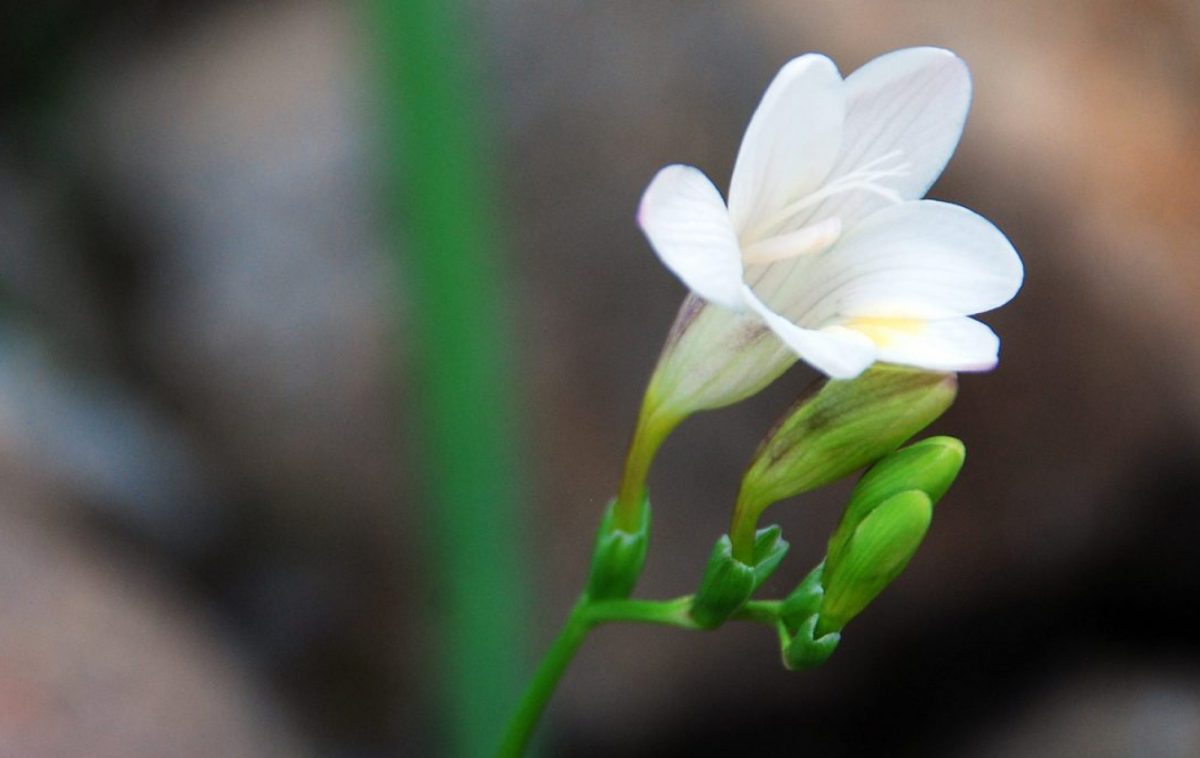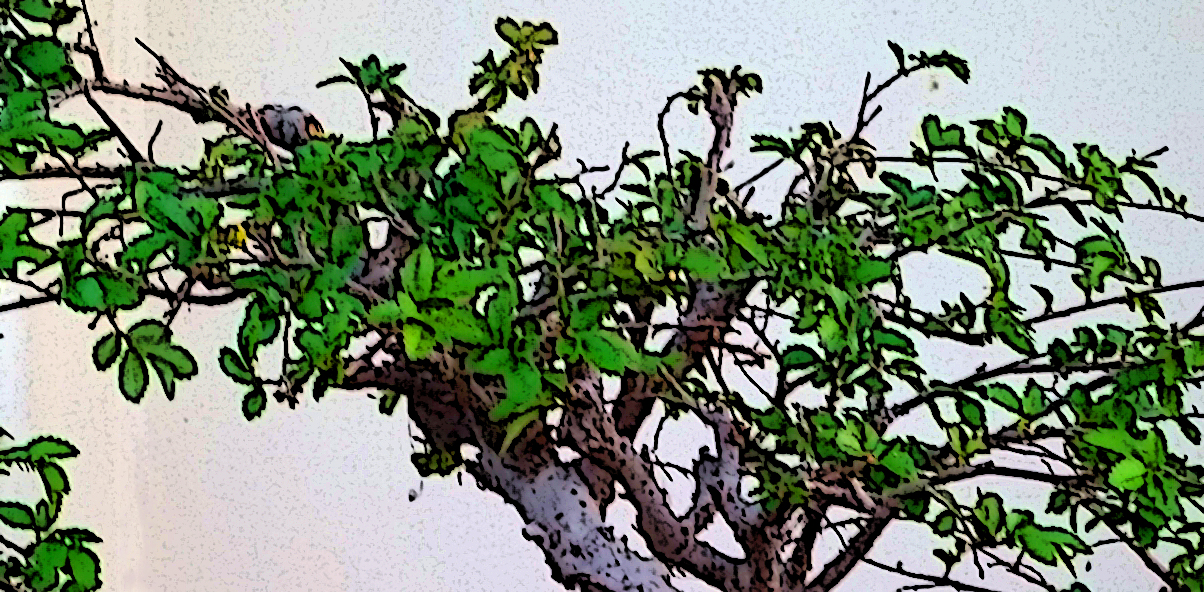Well, it’s been 20 days since I completely defoliated and trimmed the Chinese Elm and already the new leaves are growing in nicely! Chinese Elms are one of my favorite bonsai. Not only are they super hardy and grow very quickly but they also can take some really aggressive pruning and bounce right back. Their leaves are already very small and with some regular training, they can grow even smaller. This really helps to give the illusion of a larger tree that’s been miniaturized.
Notice as well the exaggerated taper of the trunk. This is another trick used by bonsai artists to fool the eye by replicating the growth ratio of full sized trees in nature. There are some strict rules in creating and training bonsai that this example doesn’t necessarily follow, like branch placement, but sometimes its better to follow your heart and create what you want to see. This is a relatively young tree, about 15 years old, and still requires at least another decade of this aggressive training and pruning. The art of bonsai is not for those with short attention spans, it takes decades to get a good specimen. There are tricks to speed things along, but if you’re looking for a hobby with a quicker feeling of satisfaction you’re barking up the wrong, ahem…tree. Oof, sorry. That pun hurt me as well.




I’ve been toying with the idea of getting into bonsai. Is it ridiculous to start from seed? If so, how old of a starter tree should I get, and do you have any suggestions for where to get one? What equipment do I need? Do you have any book recommendations on the subject?
Hi Nikki. It’s not rediculous to start with seeds, but it will add time to the already lengthy process.
Here’s the deal with bonsai that most people neglect. It’s ALL about trunk development.
Most people will buy a sapling of a common bonsai breed and instantly begin wiring it up or cutting the branches. This is a waste of time because in order to get that harmonious ratio in real bonsai (vs. Mall-sai, the ones you see in shopping mall booths with glued rocks on the surface), you’ll need the tree to grow rather tall to develop the right trunk thickness. Then you’ll remove the entire top of the tree anyways. Like 3/4 of it at least. So why bother training branches that’ll be gone anyways?
For example, a 3″ diameter trunk has to be 16″-18″ in height in the end. A 1/2″ diameter trunk, which is typically what you’ll buy as a starter bonsai in malls would have to be like 3″ tall to get that ratio right. Or else it’ll just look like an over-pruned sapling. Which it is. But the idea is to give the illusion of a real giant tree.
So, to start with a seed, I’d grow it in the yard for a couple years. Un-prunned and we’ll fertilized with nitrogen and phosphorus rich fertilizer for maximum growth.
Then move it to a 5 gallon pot after pruning back the roots for a few years. And only then should you begin training and branch placement.
That’s the fastest way by seed. You’re looking at 4 years minimum.
Orrrr, you can find a larger tree or shrub that’s already in a 5 gallon pot and already has your desired trunk thickness and begin right now.
Some folk collect field specimens that already have the age as well as the trunk characteristics they’re looking for. However, collection of trees must be done with caution whereas there are many state and federal laws to protect from that. And rightly so. Your best bet is to go to a private home owner, or the like, that are looking to thin out trees or bushes on their personal property. Get down in that dirt and check out the base of the trunk and see its potential for a final design.
I could write a book here Nikki, I’ll try to stay the course so as to not overwhelm you. I gets all excited about bonsai!
Start off with an easy species that grows quickly and can take some trial and error. Ficus is a good one, although slow growing. The Chinese Elm is great, but were I you, I’d begin with a simple jade or other similar small leaved succulent. It’ll just be so you can test out you trunk development skills and can be so abused and pruned down to a nub.
Then work your way up to an Elm or Ficus. Maples are tough and not for beginners. There are many shrubs and bushes that make awesome bonsai and are hardy and relatively easy. Get a few to tend to so you can stay busy during the long waiting periods.
As for tools, there’s tons out there. Don’t go overboard your first few years. Some fine point scissors, a branch cutter, a concave cutter and a few gauges of bonsai wire should be ample for now. You’re just growing trunks anyways right? So no need for the big kit yet anyways. But the wire and cutters can be used on your test succulents while you’re waiting for the masterpiece.
As for books for the beginner, I recommend The Bonsai Handbook by David Prescott or The Bonsai Specialist by David Squire (he talks a lot about different species). Both are great resources.
So, that said, I really hope you get into this fascinating and ancient art. It’s so good for the soul. You’re essentially dedicating years of your life to pay homage to the powerful beauty of old trees. Your sculpting with living organisms and can express yourself through them. The art will give you a great peace and focus that you can carry with you everywhere. In short, do it!
Also watch every Karate Kid movie. Mr. Miogi (sp?) will teach you all you’ll need.
Check in with me when you find a species you want to work with and I’ll help you along.
love the karate kid shoutout